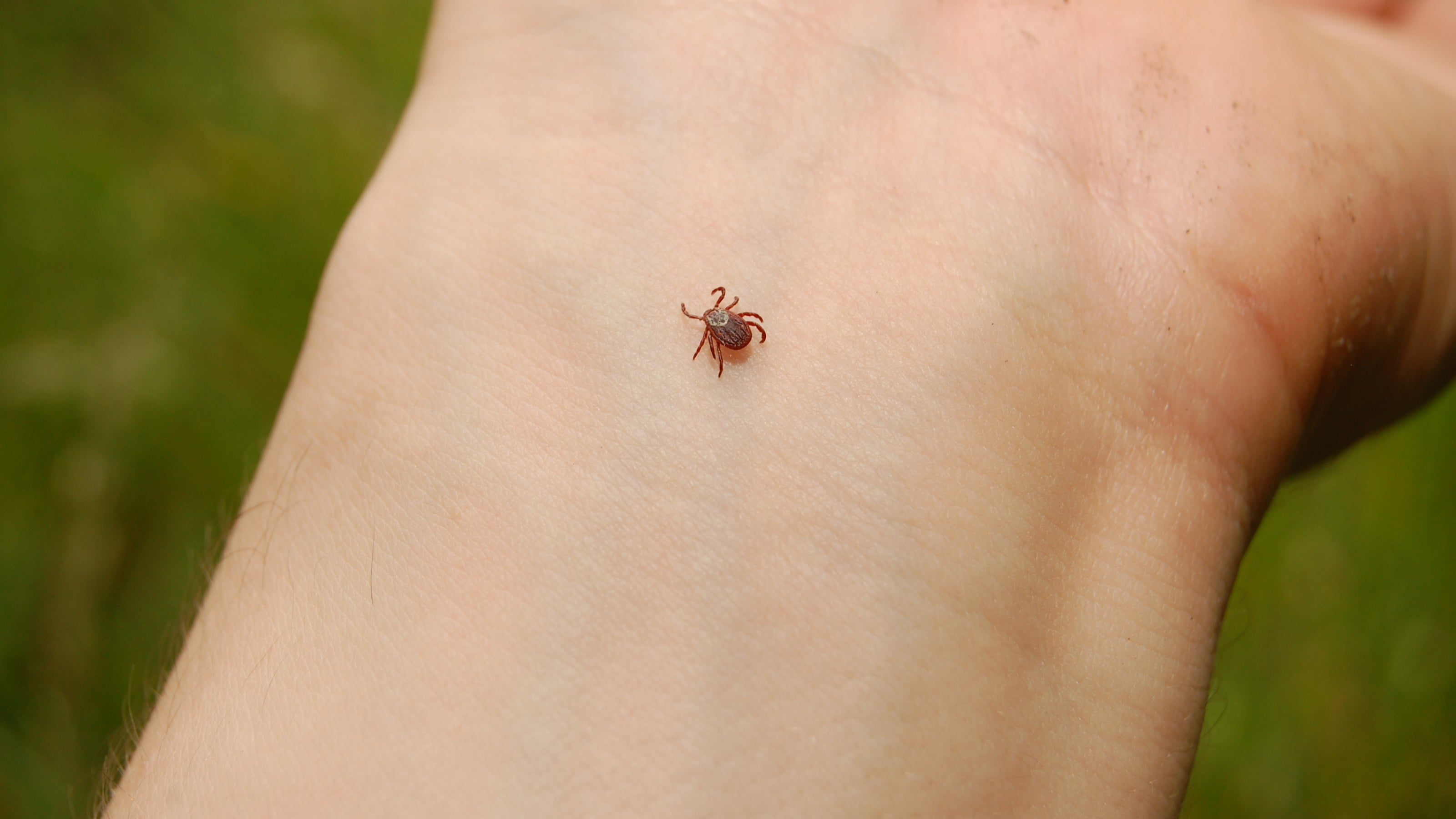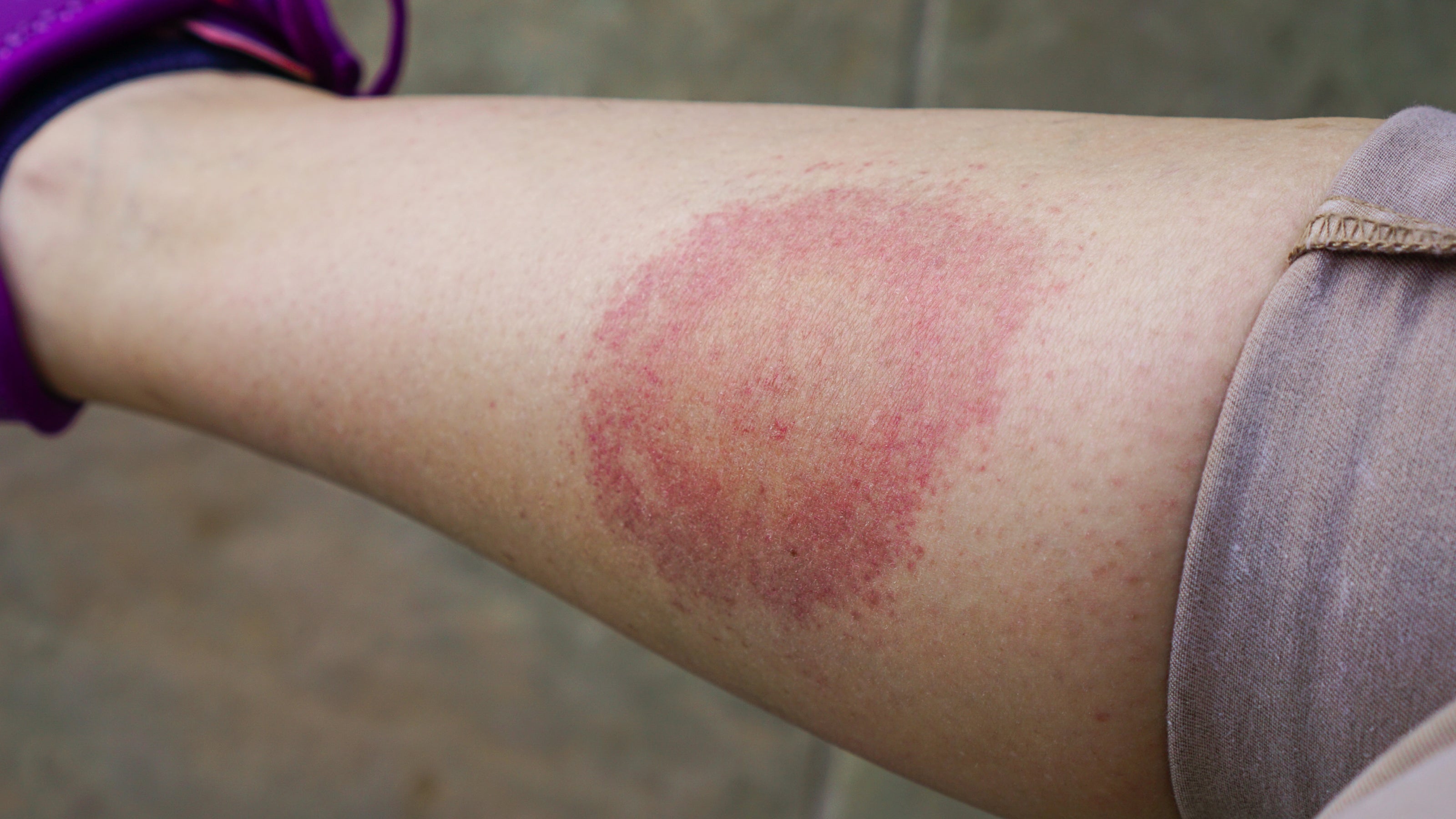How can a bug so small wreak so much havoc on both humans and animals? We’re not talking about mosquitoes or fruit flies. This month, we’re focused on ticks. Small, dark, and mysterious, ticks lurk in the shadows and spy as you and your pup stroll in the outdoors. As your furry friend shuffles through the bushes, entranced by the smells of nature, a smaller, creepier crawler has chosen its next victim. As the tick latches on, you may not even realize you or your pet have been targeted, which is how some Lyme disease cases slip through the cracks. Ticks are the silent predators of the bug community.

An infected tick bite can result in the harsh side effects of Lyme disease for you or your furry pal. Lyme is an often forgotten or overlooked sickness that many people may have heard about but don’t know the intricate details of. However, this disease is quite serious in the United States. Approximately 476,000 Americans are diagnosed with it each year, and it’s believed that only a fraction of Lyme cases are officially reported.
May is Lyme Disease Awareness Month and Wondercide is bringing attention to the silent perpetrator of the wilderness. We hope you’ll gain a better understanding of the disease so you can better protect your family from falling victim to its wrath.
Which ticks are dangerous?
Lyme disease is caused by an infection from tick-transmitted borrelial pathogens. In the U.S., Borrelia burgdorferi is the main cause and it’s spread by the blacklegged tick (Ixodes scapularis) in the eastern half of the country and the western blacklegged tick (Ixodes pacificus) along the Pacific coast. Blacklegged ticks are sometimes called deer ticks or bear ticks. These stealthy arachnids are often smaller than other species, which makes them even more difficult to spot under fur or on hidden parts of the body.
Blacklegged tick territory includes tall grass, shrubbery, and forests where they can find ample prey to latch onto. Unfortunately, Lyme-carrying ticks have the ability to survive year-round, even in below-freezing temperatures. However, prime tick season occurs between April and October. So, as the weather gets warmer and the outdoors becomes our second home, it’s best to stay as vigilant as possible.
Who can get Lyme disease?
Both humans and animals can be affected by Lyme disease. The disease is rarely found in cats and more prevalent in dogs.
How long does a tick have to be attached to transmit Lyme?
Not all tick bites are infectious, but due to how late signs of the disease can show up, it’s tricky to tell if the tick that sank its teeth into you was armed with Lyme or not. Thankfully, according to experts, a tick must be attached for 36 to 48 hours or more before the Lyme disease bacterium can be transmitted.
Why are tick checks important?
Chances of getting Lyme disease are greatly reduced by removing an embedded tick within 24 hours so being vigilant with tick checks is key. Also, blacklegged ticks are small and their bite is often painless, so it’s easy for the tick to go undetected.
Perform a routine tick check after each outdoor excursion to ensure that you’re keeping an eye out for these hidden pests. Sometimes, you’ll be lucky enough to catch one crawling overtop your pup’s thick fur or atop your kitten’s skin, but other times you’ll have to look a bit closer.
How do I remove an embedded tick?
If you stumble upon a tick and realize it's already embedded into the skin, remove the tick with a pair of tweezers by grasping the tick’s body as close to the surface of your skin as possible and then pull the tick out by pulling up with steady, even pressure.

Should I get a tick tested for Lyme disease?
Some experts suggest it’s important to send a tick in for testing to determine if it’s carrying the pathogen that causes Lyme disease. Others do not recommend testing. The same standards of quality control that clinical diagnostic labs meet are not required for labs that do tick testing. Also, a positive result from testing doesn’t automatically mean that a person or animal has been infected.
How do I dispose of a tick?
Ticks are notoriously difficult to kill and crushing them is not recommended, nor is it often possible. Instead, flush the tick down the toilet.
What are the symptoms of Lyme disease?
Symptoms vary and can be mild or severe depending on the person or animal. Typically, early symptoms will appear within a month and sometimes as early as a few days after the bite.
The symptoms for animals:
- Fever
- Lethargy
- Loss of appetite
- Lameness or stiffness, which may shift from one leg to another
- Swollen and painful joints
- Swollen lymph nodes
- Difficulty breathing
The symptoms for people:
- Erythema migrans rash (a small, red bump that expands over time)
- Fever/chills
- Fatigue
- Headache
- Joint Pain
- Shooting pains
- Heart palpitations
- Dizziness
- Arthritis (in cases of chronic Lyme)
- Memory Loss (in cases of chronic Lyme)
- Stiffness/facial paralysis
Many Lyme disease cases present with a bullseye rash on the skin. Not everyone gets the rash, but if one presents itself on your body, see a doctor immediately because it’s may be a sign that you’ve contracted Lyme.

How is Lyme disease diagnosed?
Your doctor will consider your symptoms and their physical findings, such as a rash. There are blood tests that can identify antibodies that are made in response to the infection. However, Lyme disease is very tricky to detect in some cases due to the vagueness and wide range of the symptoms combined with the fact that the patient may not realize they were bitten by a tick.
With proper treatment and early detection, the vast majority of Lyme disease patients will make a full recovery. However, if Lyme goes untreated, there is a 60 percent chance that it could develop into Lyme arthritis and permanent joint damage is possible.
How is Lyme disease treated?
The treatment process for Lyme is similar for both animals and people. A doctor or vet will most likely prescribe an oral antibiotic, usually doxycycline. If detected early, a short course of the antibiotic is employed. For some, a four-week program of antibiotics may be necessary. After treatment, 10-20% of patients will experience ongoing symptoms, known as Post Treatment Lyme Disease Syndrome (PTLDS). Research is ongoing to determine how to address chronic issues.
Join us in recognizing Lyme Disease Awareness Month this May. We hope the information and tips shared will help your family stay protected from one of nature’s stealthiest predators, the tick.




